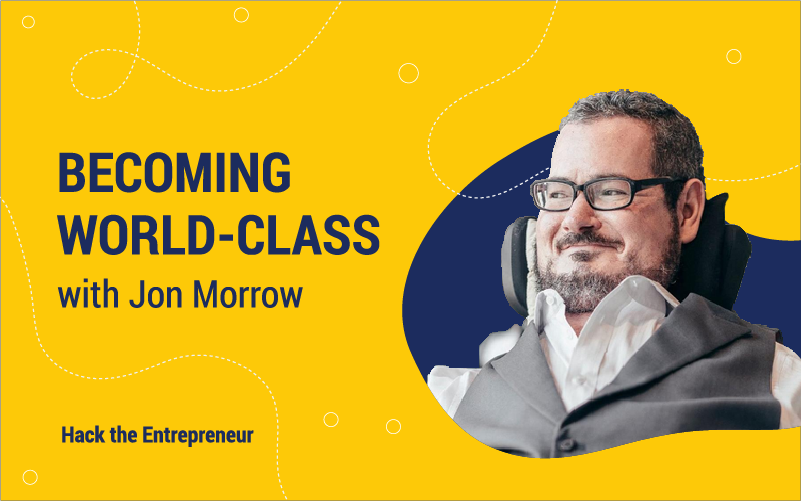
Over the years, I’ve had the pleasure of interviewing people growing businesses in almost every market imaginable, from trampoline parks to peanut butter. And from the farthest reaches of the world, from Ukraine to South Africa.
Despite all of those differences, they’ve all shared a commonality that today’s guest does not share — they could move.
My interview guest today is Jon Morrow, a brilliant writer and entrepreneur who can’t move anything but his face.
It’s not a joke.
The only parts of his body he can move are his eyes and lips. His hands, feet, arms, and legs, are almost totally paralyzed, managing the occasional twitch and nothing more.
And yet, he has created an amazing life for himself.
Using speech recognition technology, he’s written articles read by more than 5 million people. He’s also built several blogs that have made him millions of dollars.
Now, let’s hack…
Jon Morrow.
Highlights from the interview
- [8:00]: Jon discusses how he got started with blogging, and how he mastered the art of crafting great headlines. A lifelong writer since the age of five, he connected with some big-name blogging influencers back in 2006, when blogging was a new industry. These included Brian Clark of Copyblogger and SEO guru Neil Patel. He worked for Copyblogger for about four years, learning the craft. When Jon was asked to write 100 headlines a day, he followed through. The assignment wasn’t even meant to be feasible, and he was the only person who’d actually done it. In his first year, he wrote 36,000 headlines.
- [12:36]: Jon wrote 2,000 words a day, seven days a week, every day, for two years straight. This helped him really hone his skills as a writer.
- [16:11]: After being passed over for a promotion at Copyblogger, Jon started his own blog. Around the time, he’d also gotten an offer from Neil Patel. He started a site of his own, and before it even launched, he had 14,000 signups for the prelaunch. This was the point at which he made the transition from writer to entrepreneur.
- [21:05]: Jon talks about mastering the art of creating successful info products. There was a major learning curve to it. People “hire” products to do “jobs” for them. Jon used this principle to map out people’s buying processes, examining the underlying motivations behind purchases. These motivations can lead to highly divergent products filling similar roles — for example, flowers and chocolate on Valentine’s Day, or an iPhone and a fedora.
Resources and links from the interview
- SmartBlogger
- Jobs to Be Done Framework
- “11 Reasons Not to Become Famous” by Tim Ferriss
- HTE Podcast: Brian Clark on Business Partnerships and the Creativity of Limitations
Show sponsor
- Freshbooks: Join the 24 million people who’ve used FreshBooks. Try it free for 30 days — no catch and no credit card required.Go to FreshBooks.com/HACK and enter HTE in the “how did you hear about us” section to get started.